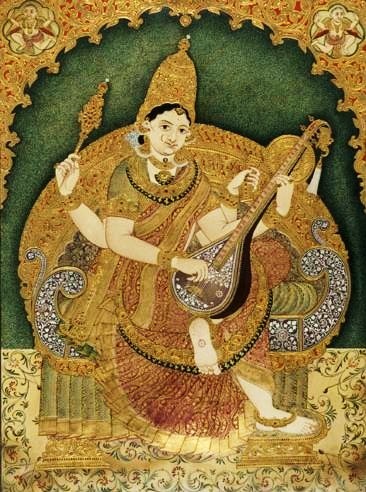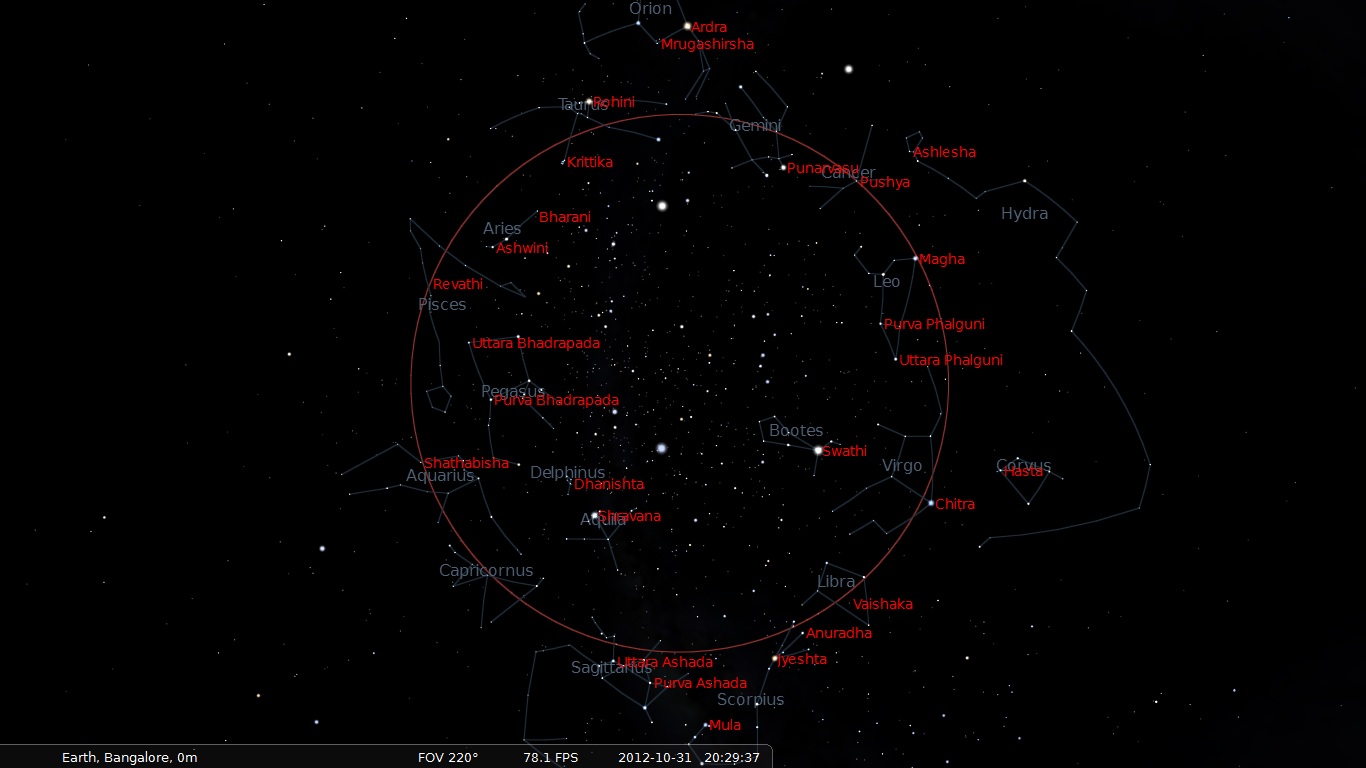|
Saraswati Temple, Wargal
Wargal Saraswati Temple or Sri Vidya Saraswati Temple is a Hindu temple located in Siddipet district in Telangana, India. The deity of education in Hinduism is Goddess Saraswati. It is among the few temples of Saraswati in Telangana. It is maintained by the Kanchi Shanker Mutt. Construction of the temple complex was due to the efforts of Yayavaram Chandrashekhara Sharma, a scholar and adherent of Goddess Saraswati. The Temple This temple is located on a hillock near Wargal village. On the same hillock are the temples of various other deities, such as: * Sri Lakshmi Ganapathi Temple * Sri Vidya Saraswati Temple * Lord Shanishchara Temple * Lord Shiva Temple * A few Vaishnava temples, now completely damaged and without ''mola vigrahas'' Many families visit the temple for their children's '' akshara abyasam'' ("learning ceremony"). Meals are provided for free to all devotees at the temple premises, a practice referred to as ''nitya annadanam''. Vasant Panchami and Sharad Navrat ... [...More Info...] [...Related Items...] OR: [Wikipedia] [Google] [Baidu] |
India
India, officially the Republic of India, is a country in South Asia. It is the List of countries and dependencies by area, seventh-largest country by area; the List of countries by population (United Nations), most populous country since 2023; and, since its independence in 1947, the world's most populous democracy. Bounded by the Indian Ocean on the south, the Arabian Sea on the southwest, and the Bay of Bengal on the southeast, it shares land borders with Pakistan to the west; China, Nepal, and Bhutan to the north; and Bangladesh and Myanmar to the east. In the Indian Ocean, India is near Sri Lanka and the Maldives; its Andaman and Nicobar Islands share a maritime border with Thailand, Myanmar, and Indonesia. Modern humans arrived on the Indian subcontinent from Africa no later than 55,000 years ago., "Y-Chromosome and Mt-DNA data support the colonization of South Asia by modern humans originating in Africa. ... Coalescence dates for most non-European populations averag ... [...More Info...] [...Related Items...] OR: [Wikipedia] [Google] [Baidu] |
Akshara Abyasam
Akshara () is a term used in the traditional grammar of the Sanskrit language and in the Vedanta school of Indian philosophy. The term is derived from अ, '' a-'' "not" and क्षर्, ''kṣar-'' "melt away, perish". The uniting aspect of its use is the mystical view of language, or ''shabda'', in Hindu tradition, and especially the notion of the ''syllable'' as a kind of immutable (or "atomic") substance of both language and truth, most prominently, the mystical syllable Aum, which is given the name of ''ekākṣara'' (i.e. ''eka-akṣara''), which can be translated as both "the sole imperishable thing" and as "a single syllable". Grammatical tradition The akshara is the unit of graphemic symbols in the Brahmic scripts. An akshara is more a syllable-like unit for writing which requires the knowledge of syllables and the ''matra'', i.e. the measure of prosodic marking. In writing it prototypically stands for CV, CVV, CCV, CCVV, CCCV, CCCVV, V and VV where "C" stands for a ... [...More Info...] [...Related Items...] OR: [Wikipedia] [Google] [Baidu] |
Saraswati Temples
Saraswati (, ), also spelled as Sarasvati, is one of the principal goddesses in Hinduism, revered as the goddess of knowledge, education, learning, arts, speech, poetry, music, purification, language and culture. Together with the goddesses Lakshmi and Parvati, she forms the trinity of chief goddesses, known as the Tridevi. Sarasvati is a pan-Indian deity, venerated not only in Hinduism but also in Jainism and Buddhism.Ludvik (2007), pp. 1, 11. She is one of the prominent goddesses in the Vedic tradition (1500 to 500 BCE) who retains her significance in later Hinduism. In the Vedas, her characteristics and attributes are closely connected with the Sarasvati River, making her one of the earliest examples of a river goddess in Indian tradition. As a deity associated with a river, Sarasvati is revered for her dual abilities to purify and to nurture fertility. In later Vedic literature, particularly the Brahmanas, Sarasvati is increasingly identified with the Vedic goddess of sp ... [...More Info...] [...Related Items...] OR: [Wikipedia] [Google] [Baidu] |
List Of Hindu Temples In India
This is a list of major Hindu temples in India, by States and territories of India, state. This is a dynamic list. For example, Tirumala Tirupati Devasthanams (self-described as "the world's richest temple trust") has an ongoing campaign to build a replica of the iconic Venkateswara Temple, Tirumala, Lord Venkateswara Swamy temple in Tirupati district, Tirupati in every Indian state and union territory that does not yet have one. The trust has developed 58 temples since 1933, mostly in the South Indian states of Andhra Pradesh, Tamil Nadu, and Telangana. It most recently opened a temple in Jammu in June 2023. It also plans to construct "smaller temples in remote and backward villages in South Indian states." Andhra Pradesh There are around 4,000 large temples in Andhra Pradesh state * Ahobilam * Alipiri * Amararama * Satyanarayana Temple, Annavaram, Annavaram * Bhavanarayana Temple, Sarpavaram * Bugga Ramalingeswara temple, Bugga Ramalingeswara Swamy Temple, Tadipatri * ... [...More Info...] [...Related Items...] OR: [Wikipedia] [Google] [Baidu] |
Vedic Recitation
The oral tradition of the Vedas () consists of several pathas, "recitations" or ways of chanting the Vedic mantras. Such traditions of Vedic chant are often considered the oldest unbroken oral tradition in existence, the fixation of the Vedic texts (samhitas) as preserved dating to roughly the time of Homer (early Iron Age or 800 BC).Scharfe, Ch. 13: "Memorising the Veda", p. 240 ff. UNESCO proclaimed the tradition of Vedic chant a Masterpiece of the Oral and Intangible Heritage of Humanity on November 7, 2008. Tones Vedic chantings use 4 tones – (middle tone), (lower tone), (higher tone) and (high tone extended). These are usually marked with intuitive marks – an underline for (), a small vertical line above the letter for () and two vertical lines for (). Pathas The various pathas or recitation styles are designed to allow the complete and perfect memorization of the text and its pronunciation, including the Vedic pitch accent. Eleven such ways of reciting the ... [...More Info...] [...Related Items...] OR: [Wikipedia] [Google] [Baidu] |
Veda
FIle:Atharva-Veda samhita page 471 illustration.png, upright=1.2, The Vedas are ancient Sanskrit texts of Hinduism. Above: A page from the ''Atharvaveda''. The Vedas ( or ; ), sometimes collectively called the Veda, are a large body of religious texts originating in ancient India. Composed in Vedic Sanskrit, the texts constitute the oldest layer of Sanskrit literature and the oldest Hindu texts, scriptures of Hinduism. There are four Vedas: the Rigveda, the Yajurveda, the Samaveda and the Atharvaveda. Each Veda has four subdivisions – the Samhitas (mantras and benedictions), the Brahmanas (commentaries on and explanation of rituals, ceremonies and sacrifices – Yajñas), the Aranyakas (text on rituals, ceremonies, sacrifices and symbolic-sacrifices), and the Upanishads (texts discussing meditation, philosophy and spiritual knowledge).Gavin Flood (1996), ''An Introduction to Hinduism'', Cambridge University Press, , pp. 35–39A Bhattacharya (2006), ''Hindu Dharma: Introduc ... [...More Info...] [...Related Items...] OR: [Wikipedia] [Google] [Baidu] |
Devi
''Devī'' (; ) is the Sanskrit word for 'goddess'; the masculine form is Deva (Hinduism), ''deva''. ''Devi'' and ''deva'' mean 'heavenly, divine, anything of excellence', and are also gender-specific terms for a deity in Hinduism. The concept and reverence for goddesses appears in the Vedas, which were composed around the 2nd millennium BCE. However, they did not play a vital role in that era. Goddesses such as Durga, Kali, Lakshmi, Parvati, Radha, Saraswati and Sita have continued to be revered in the modern era. The medieval era Puranas witness a major expansion in mythology and literature associated with Devi, with texts such as the ''Devi Mahatmya'', wherein she manifests as the ultimate truth and supreme power. She has inspired the Shaktism tradition of Hinduism. Further, Devi is viewed as central in the Hindu traditions of Shaktism and Shaivism. Etymology ''Devi'' and ''deva'' are Sanskrit terms found in Vedic literature around the 3rd millennium BCE. ''Deva'' is masculi ... [...More Info...] [...Related Items...] OR: [Wikipedia] [Google] [Baidu] |
Nakshatra
Nakshatra () is the term for Lunar mansion in Hindu astrology and Buddhist astrology. A nakshatra is one of 27 (sometimes also 28) sectors along the ecliptic. Their names are related to a prominent star or asterisms in or near the respective sectors. In essence (in Western astronomical terms), a nakshatra simply is a constellation. Every nakshatra is divided into four ''padas'' ( "steps"). The starting point for the nakshatras according to the ''Vedas'' is "Krittika" (it has been argued, because the Pleiades may have started the year at the time the ''Vedas'' were compiled, presumably at the vernal equinox), but, in more recent compilations, the start of the nakshatras list is the point on the ecliptic directly opposite the star Spica, called ''Chitrā'' in Sanskrit. This translates to Ashwinī, a part of the modern constellation of Aries. These compilations, therefore, may have been compiled during the centuries when the sun was passing through Aries at the time of the ver ... [...More Info...] [...Related Items...] OR: [Wikipedia] [Google] [Baidu] |
Mula (nakshatra)
Mūla ('root'; Devanagari मूल/मूळ, , , ) is the 19th ''nakshatra'' or 'lunar mansion' in Jyotisha and corresponds to the stars: λ Sco, υ Sco, ε Sco, μ1 Sco, θ Sco, κ Sco, ι1 Sco, and ζ1 Sco. The symbol of Mula is a bunch of roots tied together (reticulated roots) or an 'elephant goad' (ankusha) and the Deity associated with it is Niriti, the god of dissolution and destruction. The Lord of Mula is Ketu KETU (1120 AM) is a commercial radio station licensed to Catoosa, Oklahoma, and serving the Tulsa metropolitan area. The station broadcasts a Spanish adult contemporary radio format and is owned by Antonio Perez, through licensee Radio Las Amer ... (south lunar as a node). The Ascendant/Lagna in Mula indicates a person who has a passionate desire to get to the truth and is good at investigation and research. They are direct, ardent and truthful and are shrewd and ambitious, but they can feel trapped and bound by circumstances and so feel resentmen ... [...More Info...] [...Related Items...] OR: [Wikipedia] [Google] [Baidu] |
Navratri
Navaratri () is an annual Hindu festival observed in honor of the goddess Durga, an aspect of Adi Parashakti, the supreme goddess. It spans over nine nights, first in the month of Chaitra (March/April of the Gregorian calendar), and again in the month of Ashvin (September–October). It is observed for different reasons and celebrated differently in various parts of the Hindu Indian cultural sphere. Theoretically, there are four seasonal ''Navaratris''. However, in practice, it is the post-monsoon autumn festival called Sharada Navaratri. There are 2 Gupta Navaratris or "Secret Navaratris" as well, one starting on the Shukla Paksha Pratipada of the Magha Month (Magha Gupta Navaratri) and another starting in the Shukla Paksha Pratipada of Ashadha Month. Etymology and nomenclature The word ''Navarātram'' means "a period of nine nights" in Sanskrit, ''nava'' meaning "nine" and ''ratri'' meaning "night". Dates and celebrations In the eastern and northeastern states of ... [...More Info...] [...Related Items...] OR: [Wikipedia] [Google] [Baidu] |
Vasant Panchami
Vasant Panchami , also rendered Vasanta Panchami and Saraswati Puja in honour of the Hindu goddess Saraswati, is a festival that marks the preparation for the arrival of spring. The festival is celebrated in Indian religions in different ways depending on the region. Vasant Panchami also marks the start of preparation for Holika and Holi, which take place forty days later. The Vasant Utsava (festival) on Panchami is celebrated forty days before spring, because any season's transition period is 40 days, and after that, the season comes into full bloom. Nomenclature and date Vasant Panchami is celebrated every year on the fifth day of the bright half of the Hindu lunisolar calendar month of Magha, which typically falls in late January or February. Spring is known as the "King of all Seasons", so the festival commences forty days in advance. It is generally winter-like in northern India, and more spring-like in central and western parts of India on Vasant Panchami, which give ... [...More Info...] [...Related Items...] OR: [Wikipedia] [Google] [Baidu] |
Vaishnava
Vaishnavism () ), also called Vishnuism, is one of the major Hindu traditions, that considers Vishnu as the sole supreme being leading all other Hindu deities, that is, '' Mahavishnu''. It is one of the major Hindu denominations along with Shaivism, Shaktism, and Smartism. Its followers are called Vaishnavites or ''Vaishnava''s (), and it includes sub-sects like Krishnaism and Ramaism, which consider Krishna and Rama as the supreme beings respectively. According to a 2020 estimate by The World Religion Database (WRD), hosted at Boston University’s Institute on Culture, Religion and World Affairs (CURA), Vaishnavism is the largest Hindu sect, constituting about 399 million Hindus. The ancient emergence of Vaishnavism is unclear, and broadly hypothesized as a fusion of various regional non-Vedic religions with worship of Vishnu. It is considered a merger of several popular non-Vedic theistic traditions, particularly the Bhagavata cults of Vāsudeva-Krishna and '' ... [...More Info...] [...Related Items...] OR: [Wikipedia] [Google] [Baidu] |







